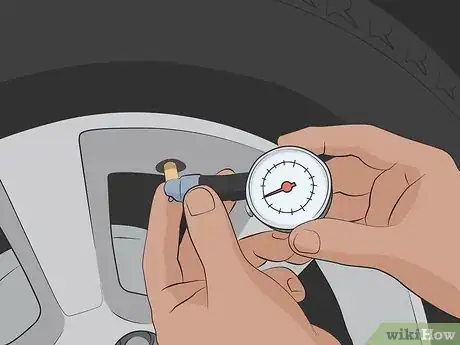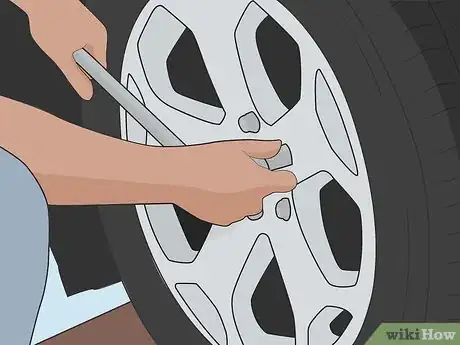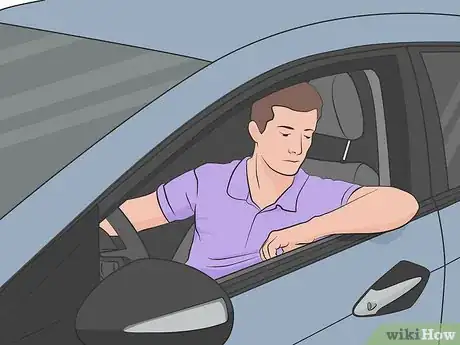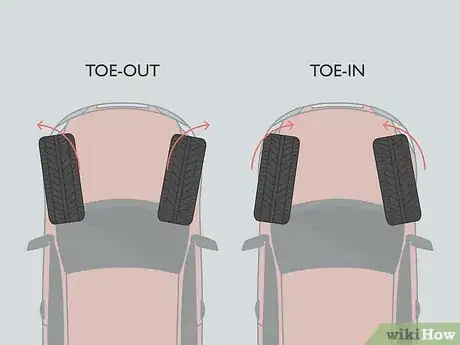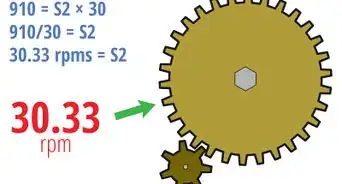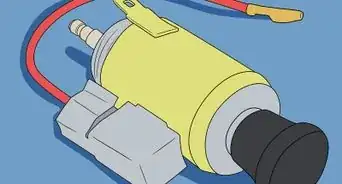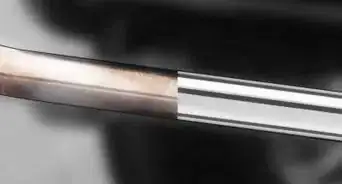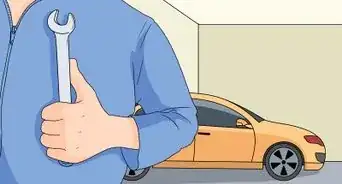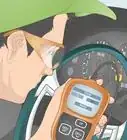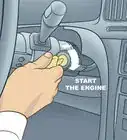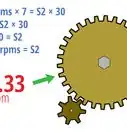This article was co-authored by Mike Parra and by wikiHow staff writer, Eric McClure. Mike Parra is a Master Mechanic in Arizona. With over 20 years of mechanic experience, he has experience working with American, European, and other foreign makes and models. He is ASE (Automotive Service Excellence) certified and has an AA degree in Automotive Repair Technology.
There are 11 references cited in this article, which can be found at the bottom of the page.
wikiHow marks an article as reader-approved once it receives enough positive feedback. In this case, 90% of readers who voted found the article helpful, earning it our reader-approved status.
This article has been viewed 463,873 times.
Alignment refers to the angle and direction of the wheels on your vehicle, but it’s also the name of the repair procedure that fixes problems with your wheel alignment. It may sound confusing, but you need to get an alignment to fix your alignment! Alignment issues can be triggered by potholes, curbs, or heavy wear on your tires. Since this repair requires an alignment rack, it isn’t a problem you can fix without a mechanic. Luckily, alignment issues are relatively easy to diagnose and inexpensive to repair if you don’t need to replace parts of your wheel assembly.[1]
Steps
Assessing Your Alignment
-
1Check your tire pressure and reinflate your tires if necessary. Check the panel on the inside of your driver-side door to find the optimum psi for your tires. Then, grab a pressure gauge and unscrew the cap on your first tire’s air valve. Stick the gauge on the valve to take your reading. If any of your tires are underinflated, fill them up with air at a gas station to see if this resolves the problem.[2]
- Often, what appears to be an alignment problem is simply a tire issue. If the problem goes away after you check and inflate your tires, you don’t need an alignment.
- Psi stands for pound-force per square inch. It’s the unit of measurement for air pressure.
- Typically, you want your tires to be 28-36 psi. This is different for every make and model, though.
- When you’re inflating the tire, do it a little bit at a time and keep rechecking the pressure to make minor adjustments.
Warning: Don’t go by the psi printed directly on your tires. This is the maximum pressure for your tires, not the optimum pressure for your vehicle. While you should never exceed the psi printed on the tires, you may end up losing gas mileage and wearing your tires out faster if you use the number on your tires as the benchmark.[3]
-
2Tighten each of your lug nuts to see if a loose nut is the issue. Go into your trunk and grab the lug wrench that came with your spare tire. Take it out and go around your vehicle to tighten all of the lug nuts on the outside of your vehicle. If any of the nuts were loose, this was likely the issue. Tighten all of the lug nuts and see if the problem goes away.[4]
- Lug nuts rarely get loose on their own if they’re dry. Loose lug nuts are typically the result of a hasty spare change.
- If you lug nuts keep coming loose, use a degreaser to scrub any oil off of the bolts one at a time before reinstalling them. Lubricated bolts have a tendency to unscrew over time.
Advertisement -
3Try letting go of the steering wheel in an empty lot to see if it turns. Take your vehicle to an empty parking lot. Press the gas a little but don’t touch the steering wheel. Watch the logo in the center of your steering wheel. If the wheel turns more than 5- to 10-degrees over 40–50 feet (12–15 m), you may have an alignment issue. If it turns in the same direction when driving back and forth across the lot, it’s even more likely that you need an alignment.[5]
- Unless you’re driving over a perfectly flat surface, the wheel will naturally turn a little due to the angle of the road.
- If the wheel turns the same direction when you’re driving back and forth over the same strip, it’s a sign that the alignment is particularly bad since the wheel is ignoring the natural angle of the road and always pulling in the same direction.
-
4Listen to hear if noise is coming from your tires when you drive. Take your vehicle out on a main road or highway. Lower the windows all the way and listen carefully as you accelerate to see if noise starts coming out of your tires. If you do hear a noise, you may need an alignment. This is especially true if you only hear a noise on one side and you already checked your tires.[6]
- This noise is usually a squeaking, which is caused by a tire rotating at the wrong angle on the road. It may be a screeching or flicking noise, though.
- If one of your tires is misaligned, you may notice a noise whenever you turn in a certain direction.
-
5Grip the steering wheel while accelerating to see if it shakes or tilts. The next time you’re driving, grip the steering wheel firmly at 10 and 2 as you accelerate. If the wheel starts vibrating or shaking while you accelerate, or you feel the wheel fighting against you to turn left or right when you’re going straight, you may have an alignment problem.[7]
- This is not as reliable a test on vehicles made before 1990, since the steering column is likely to be a little worn down from years of use.
-
6Look for uneven tread wear on the sides of the tires to find toe problems. Get down on the ground or remove your tire to inspect the tread. If a tire is angled inwards, it is “toe in” and the inner portion of the wheel will look worn down compared to the rest of the tire. If the tire points away from the vehicle, it is “toe out.” Both of these issues are resolved on an alignment rack.[8]
- Toe refers to the angle of the tire in relation to the vehicle and steering wheel. If one or two of your tires has a toe problem, the tires will wear down unevenly over time.
- A wavy pattern on both tires is typically the result of both tires being toe in or toe out at the same angle. This is typically solved by replacing a component that broke down on your axle or in your wheel well.
-
7Get the camber adjusted if part of the tire looks pristine. Either get down on the ground or remove a tire to inspect the tread. If part of the tire looks completely pristine but the other portion is worn down, you have an issue with your tire’s camber. Camber refers to the vertical angle of the tire as it sits on your axle. A misaligned camber can cause part of the tire to lift off of the ground. This issue is solved on an alignment rack.[9]
-
8Check the tread for hash marks or even wear to find issues with the caster. If there are hash marks on the tire or the tread looks fine but your vehicle is still tilting when you drive, your caster may be misaligned. The caster refers to the steering axis of the wheel as it lines up with your suspension. If the caster is positive or negative, it can throw your alignment off. This issue is also fixed on an alignment rack, although the mechanic will need to adjust the suspension in your vehicle.[10]
- If it feels like your alignment is randomly thrown off when you turn, it’s probably a misaligned caster pulling the vehicle in an odd direction.
Getting the Vehicle Fixed
-
1Take your vehicle to a mechanic to fix or align your vehicle. No matter what kind of DIY solution you stumble across, you can’t really fix alignment issues in your garage. A proper alignment requires an alignment rack, which you’re unlikely to have in your garage. Take your vehicle to your mechanic and describe the problem in detail to get it fixed.[11]
Tip: Aligning a vehicle comes down to adjustments that are made in thousandths of an inch (or cm). There’s no way for you to possibly get it right in the garage. Even seasoned gearheads need the equipment you find at a shop sometimes!
-
2Get your alignment shifted to resolve issues with the toe, caster, and camber. If your tires are out of line with the vehicle and they’re pointing in or out, the mechanic will reorient the wheel to line it up with your axle. They may also adjust your suspension or the caster to change the position or angle of the tire. These are common adjustments done on an alignment rack.[12]
- This procedure is what people are referring to when they talk about “getting an alignment.”
- Expect to spend $50-300 on an alignment depending on the cost of labor and how many tires need to be adjusted.
- Since the wheels are being reoriented anyway, this is a great time for a tire rotation if you need one.
-
3Get the axle or A-frame components replaced if the tires can’t be aligned. If a pothole or unaligned tire has damaged a component on your vehicle, you may need to get it replaced before your tires can be properly aligned. Your coil spring, spindle, ball joint, control bushings, or some other part of your axle assembly may need to be replaced.[13]
- The A-frame refers to the chassis of your vehicle that the axles are mounted on. If the A-frame is damaged, it can throw off the way the axle sits on your vehicle.
- These repairs vary depending on what component needs to be replaced. Expect to spend $150-1,500 depending on your make, model, and the part that needs replacing. Then, throw in the standard alignment cost. These repairs vary depending on the part.
References
- ↑ https://youtu.be/i7alzjqmPQo?t=176
- ↑ https://youtu.be/66xELnB7Jt8?t=30
- ↑ https://www.startribune.com/which-tire-pressure-rating-should-motorists-heed/296203951/
- ↑ https://youtu.be/o6dc5YCxua8?t=115
- ↑ https://youtu.be/HYZZ36phAdE?t=27
- ↑ https://thenewswheel.com/is-your-car-acting-out-of-line-signs-its-time-for-an-alignment-check/
- ↑ https://youtu.be/HYZZ36phAdE?t=99
- ↑ https://thenewswheel.com/is-your-car-acting-out-of-line-signs-its-time-for-an-alignment-check/
- ↑ https://thenewswheel.com/is-your-car-acting-out-of-line-signs-its-time-for-an-alignment-check/
